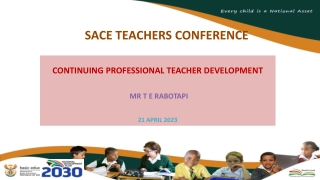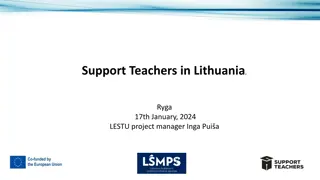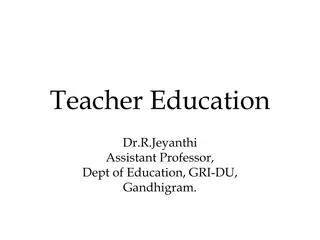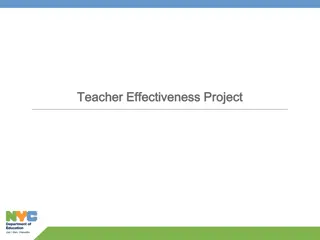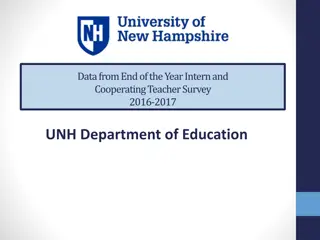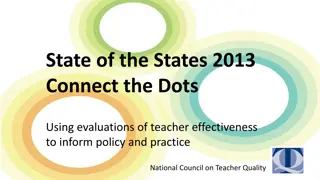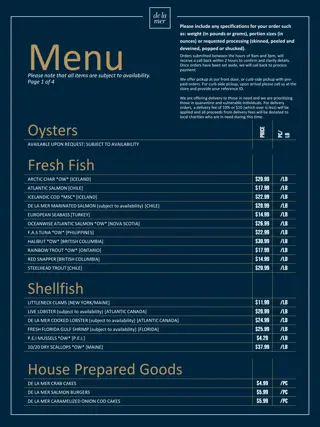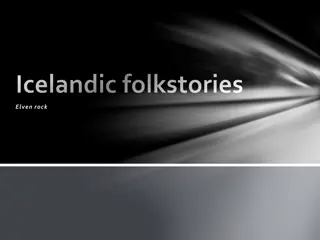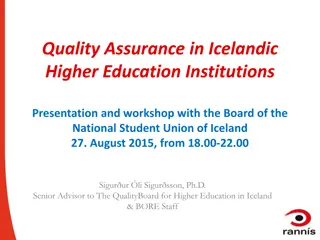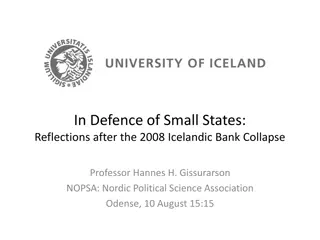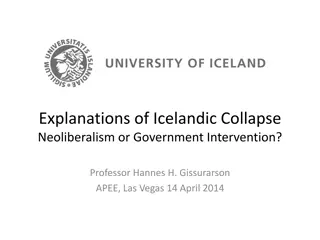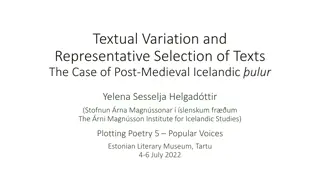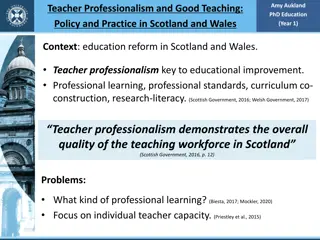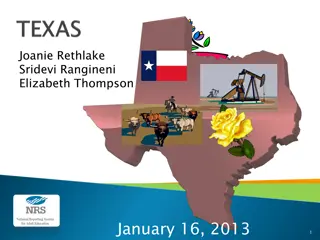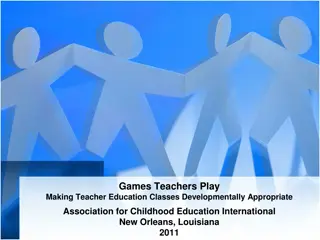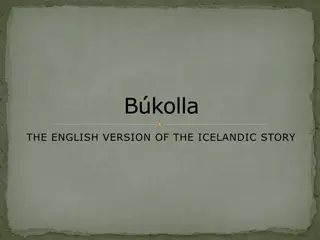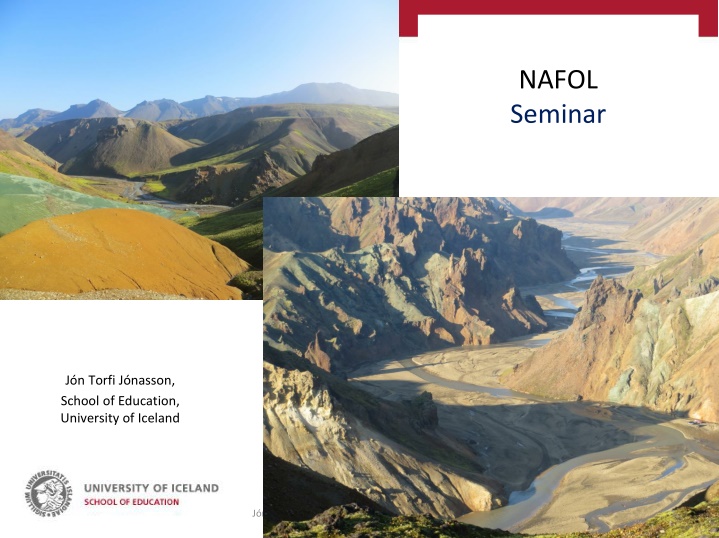
Insights into Icelandic Education System and Development
Explore the educational structure and development of the Icelandic education system through seminars and discussions led by experts at the University of Iceland. Delve into topics such as pre-school enrollment rates, system characteristics, and challenges in education discourse.
Download Presentation

Please find below an Image/Link to download the presentation.
The content on the website is provided AS IS for your information and personal use only. It may not be sold, licensed, or shared on other websites without obtaining consent from the author. If you encounter any issues during the download, it is possible that the publisher has removed the file from their server.
You are allowed to download the files provided on this website for personal or commercial use, subject to the condition that they are used lawfully. All files are the property of their respective owners.
The content on the website is provided AS IS for your information and personal use only. It may not be sold, licensed, or shared on other websites without obtaining consent from the author.
E N D
Presentation Transcript
NAFOL Seminar J n Torfi J nasson, School of Education, University of Iceland J n Torfi J nasson NAFOL Reykjav k August 2016 1
NAFOL Joint PhD seminar NAFOL Cohort 6 Cohort coordinator Professor Kari Smith Joint PhD seminar School of Education University of Iceland Reykjav k Iceland August 27-31 Icelandic leader Professor l f Gar arsd ttir Icelandic education Teacher education Grand Challenges for Education What is important in the educational discourse and why? J n Torfi J nasson, School of Education, University of Iceland jtj@hi.is http://uni.hi.is/jtj/en/
Icelandic education The form the system Characteristics of development Based on the paper: J n Torfi J nasson and Gunnhildur skarsd ttir. (2016). Iceland: Educational structure and development. In T. Sprague (Ed.), Education in non-EU countries in Western and Southern Europe, pp. 11-36. Series: Education Around the World. London: Bloomsbury. ePub: 978-1-4725-9250-7 Issues being discussed J n Torfi J nasson NAFOL Reykjav k August 2016 3
A crude outline of the system. It is not clear what it describes. Until now this does not describe what actually happens, even though governments strive towards gradually fitting the reality into their boxes. Starts at age. After compulsory school, these ages only descripe how it might work. 0 1 2 3 4 5 6 7 8 9 10 11 12 13 14 15 16 17 18 19 20 21 22 23 24 25 26 27 Upper secondary education Pre-school education Compulsory education University education. Bologna structure Pre-schools Basic school. Grades 1 to 10. Formerly primary and lower secondary education. Upper secondary. Gymnasium, Comprehensive schools. Vocational schools. Bachelor programmes Master programm es PhD programmes Starts at age. After compulsory school, these ages only descripe how it might work. 0 1 2 3 4 5 6 7 8 9 10 11 12 13 14 15 16 17 18 19 20 21 22 23 24 25 26 Upper secondary education Pre-school education Compulsory education University education. Bologna structure Pre-schools Basic school. Grades 1 to 10. Formerly primary and lower secondary education. Upper secondary. Gymnasium, Comprehensiv e schools. Vocational schools. Bachelor programmes Master program mes PhD programmes J n Torfi J nasson NAFOL Reykjav k August 2016 4
100 90 Pre-school enrolment rates for the period 1998-2014. 80 Percentage of age group attending pre-school % 0 years 1 year old 70 2 year old 60 3 year old 4 year old Note how grouping together 0-2 year old children would give a misleading picture. 50 5 year old 40 30 20 Statistics Iceland, Education, Pre-primary institutions, web, August 2016 /JTJ 10 0 J n Torfi J nasson NAFOL Reykjav k August 2016 1998 1999 2000 2001 2002 2003 2004 2005 2006 2007 2008 2009 2010 2011 2012 2013 2014 5
Enrollment by age - % - 2013 OECD data 120 0 to 2 years 3 to 4 years 5 to 14 years 15 to 19 years 20 to 29 years 30 to 39 years Greater than 40 Age Norway 55 96 100 87 30 7 3 Iceland 44 96 99 88 40 14 5 Australia 100 36 72 101 86 34 13 7 United Kingdom 11 96 98 81 21 6 3 80 Norway Why is comparative education more interested in differences than similarities? Iceland Australia 60 % United Kingdom Denmark Which age groups are compelled to go to school even when it is not compulsory? Finland Sweden 40 OECD.stat Education data. Retrived August 2016. JTJ 20 0 J n Torfi J nasson NAFOL Reykjav k August 2016 5 to 14 years 15 to 19 years 6 0 to 2 years 3 to 4 years 20 to 29 years 30 to 39 years Greater than 40
Icelandic education its development The importance of a long-term perspective. Preferably more than a century half a century may be revealing. Ten or even twenty years may not be interesting as they don t show the underlying developments. Still short periods are unfortunately often used. Note that history often is the best analytic tool. J n Torfi J nasson NAFOL Reykjav k August 2016 7
Icelandic education its development A report on the next 25 years. Written by JTJ for the years 1985-2010. Turned out to be essentially accurate. What should a book about the development of education 2015-2040 say about changes? Now, writing such book I would look at a) b) c) d) e) f) Constancy and recurrence in the discourse, continuity of development through identifiable phases, regularity, academic drift, institutional drift institutional conservatism J n Torfi J nasson NAFOL Reykjav k August 2016 8
Constancy and recurrence in the discourse 1. The enrolment into vocational education and its status 2. The conservatism in the curriculum debate and the reluctance to change 3. The nature and importance of tests and measurement 4. How to lead schools 5. . J n Torfi J nasson NAFOL Reykjav k August 2016 9
Continuity of development through identifiable phases The most simple way to express this is to note that most institutional innovation has a precursor; something had be developing before often for a long time. Legal enactment often is just a confirmation of this development. There are a multitude of examples: The establishment of the University of Iceland in 1911 The establishment of most of the comprehensive schools The development of the pre-schools The national test entrance test to the gymnasia (1946) which later became the national concluding at the end of compulsory education (1974) .. J n Torfi J nasson NAFOL Reykjav k August 2016 10
Regularity 1. Number of compulsory years as defined by law 2. Gradual development of enrolment for different cohorts 3. Exponential growth of certain high status credentials 4. The development of gender difference (upper secondary and higher education ) growing steadily for a century - a global development J n Torfi J nasson NAFOL Reykjav k August 2016 11
14 A crude demonstration of how compulsory education has expanded the last point show the duty of the State rather than compulsion for students. 12 Number of years of compulsory schooling 10 8 1907 4 years 10-14 1936 7 years 7-14 1946 8 years 7-15 1985 9 years 7-16 1990 10 years 6-16 2008 12 years 6-18, thereof 2 years state duty to educate 6 4 2 0 1880 1900 1920 1940 1960 1980 2000 2020 J n Torfi J nasson NAFOL Reykjav k August 2016 12
100 Percentage of cohort registered in formal 90 13 15 years 80 16 19 years 70 education % 60 20 24 years y = 0,7x -A 50 25 29 years 40 30 34 years 30 20 10 0 1950 1970 1990 2010 Enrolment at any level within the system of education for cohort ranges, expressed as a percentage of the cohort. Notice the smooth development, take the age range 20-24 as an example. But this holds for all ranges shown. J n Torfi J nasson NAFOL Reykjav k August 2016 13
100 90 Percentage % relative to 20 years cohort Females. UEE as a % of the 20 yr cohort (ICE) 80 Males. UEE as a % of the 20 yr cohort (ICE) 70 Females. S-logistic (ICE) fitted to 1912-2013 60 Males. S-logistic (ICE) fitted to 1912-2013 50 40 30 Source: Icelandic Historical Staistics, 1997, table 18.11; Statistics Iceland, web. August 2016 20 10 0 1860 1870 1880 1890 1900 1910 1920 1930 1940 1950 1960 1970 1980 1990 2000 2010 2020 2030 The growth of the UEE (university entrance examination is best described as an exponential growth of a credential. The exponents for males and females are different but very stable for a century. Same applies to all the Nordic countries. J n Torfi J nasson NAFOL Reykjav k August 2016 14
450 400 Proportion (%) based on one chohort (average 20-24 years) 350 300 All Icelandic university students in Iceland and abroad as % of average of 20-24 yr cohorts 250 200 150 Exponential trend. All Icelandic university students in Iceland and abroad as % of average of 20-24 yr cohorts based on the years 1911-1970 100 50 0 1940 1950 2000 1910 1920 1930 1960 1970 1980 1990 2010 2020 The number of Icelandic students enrolled at university 1911-1970. Then we fit an exponential curve and extrapolate for the next 40 years!! J n Torfi J nasson NAFOL Reykjav k August 2016 15
450 400 Proportion (%) based on one chohort (average 20-24 years) 350 All Icelandic university students in Iceland and abroad as % of average of 20-24 yr cohorts 300 250 200 Exponential trend. All Icelandic university students in Iceland and abroad as % of average of 20-24 yr cohorts based on the years 1911- 1970 150 100 Source: Statistics Iceland 50 0 1940 1950 1960 1910 1920 1930 1970 1980 1990 2000 2010 2020 The number of Icelandic students enrolled at university 1911-2011. We see that data from the first 2/3rds of the century predicted well the next 40 years. J n Torfi J nasson NAFOL Reykjav k August 2016 16
Academic drift Note that all developments mentioned here can only bee seen by watching developments over long periods of time and are not linear changes. Found everywhere. Kindergarten curricula move towards school curricula Vocations go to school Vocational studies become more academic Outdoor and ICT education serve academic subjects . J n Torfi J nasson NAFOL Reykjav k August 2016 17
4000 Number of students completing UEE (st dentspr f) 3500 One aspect of academic drift within upper secondary education. 3000 Number of students completing the journeyman s examination (sveinspr f) 2500 Number of students 2000 1500 Sources: Ingibj rg Bj rnsd ttir (2002); Icelandic Historical Statistics, 1997, table 18.11; Statistics Iceland, web. Oct 2014 /JTJ 1000 500 0 1875 1885 1895 1905 1915 1925 1935 1945 1955 1965 1975 1985 1995 2005 2015 Number of students graduating from two major sectors within upper secondary education. Notice a) the parallel development from 1870s until 1970 and b) that this graph does not show the age of the students graduating. Some students graduate from both tracks. J n Torfi J nasson NAFOL Reykjav k August 2016 18
Institutional drift The development of the compulsory system as a combination of primary schools and lower secondary schools (which were a continuation of a hybrid realschulen in Iceland. This had reached a fairly final stage with the law in 1946. Similarly the development of the upper secondary. The development of the upper secondary system into a unified system perhaps from 1946-1988, but it started earlier and is still going on. The moving of day care and kindergarten and play schools into the current formal pre-school system where it is now apart of the formal school system, with teachers and curricula. .. J n Torfi J nasson NAFOL Reykjav k August 2016 19
Issues in Icelandic education Testing (national exams at the end of 4th, 7th and 10th grade) Inclusion, The educational progress of immigrants, Evaluation mechanisms, National curriculum (general part the same for pre-primary, compulsory and upper secondary) a 21st century skills emphasis Marking systems in compulsory education Directorate of Education (From October 1st 2015) Pay- agreements and who controls the working time of teachers Government White paper with emphasis on Literacy, vocational education and prevention of dropout J n Torfi J nasson NAFOL Reykjav k August 2016 20
Teacher education The form the system Characteristics of development Issues being discussed J n Torfi J nasson NAFOL Reykjav k August 2016 21
Some landmarks Teacher education currently at three universities: UI, UnAk, IAA (arts college) 1. Teacher education gained university status in 1971. 2. Pre-school teacher education gains clear university status 1996 at the University of Akureyri and in 1998 at the Iceland University of Education. 3. In 2008 the education for teachers was formally extended from three (bachelor) to five (+master) years for both primary and pre-primary school teachers (already for upper secondary teachers). 4. In 2008 the Iceland University of Education was merged with the UI with express purpose of interweaving subject education and the subjects. 5. There is a law http://www.althingi.is/lagas/nuna/2008087.html and a regulation (http://www.reglugerd.is/reglugerdir/allar/nr/872-2009) on the ingredients of TE. None other of the well established professions has such a detailed framework. 6. A council for professional development for teachers (x 4 stakeholders) J n Torfi J nasson NAFOL Reykjav k August 2016 22
A simplified picture of the main routes. A developing alternative for compulsory education, perhaps mainly for lower secondary, but in principle for all levels. Concurrent route Consecutive route Pre-primary ed Compulsory ed Main route Compulsory ed New route Upper secondary Main route BEd BEd Bachelor Bachelor MEd MEd Master Master J n Torfi J nasson NAFOL Reykjav k August 2016 23
Number of graduated students in B.Ed. in compulsory school teacher education, 20052015 with a B.Ed. degree and 2014 2015 with a M.Ed. Degree. Borrowed from Draft: Challenges, contradictions and continuity in creating a five-year teacher education programme after the merger of two universities. Sigur ard ttir, J hannesson, skarsd ttir. J n Torfi J nasson NAFOL Reykjav k August 2016 24
Overview of the Compulsory School Teacher Education, 1998 1999, 2012 2013 and 2015 2016. Percentage of ECTS for each category and ECTS. Borrowed from Draft: Challenges, contradictions and continuity in creating a five-year teacher education programme after the merger of two universities. Sigur ard ttir, J hannesson, skarsd ttir Study 1998- 2012- 2015-2016 ECTS 1999 2013 B.Ed + M.Ed 1 semester is B.Ed. B.Ed. + 30 ECTS and 300 ECTS = 180 M.Ed. 300 is 10% 30*(10 ECTS ECTS semesters) Foundation courses 10 18 8 8 24 General pedagogy, curriculum, 20 36 14,5 14 42 teaching methods Core school subjects 19 34 3,5 13 39 Specialization in school subjects 28 50 33,5 16 48 or the teaching of young children Field practice 16 29 14 14 42 Research methods, study skills 4 7 10 8 24 Electives 3 13,5 40,5 Final projects 3 6 13,5 13,5 40,5 100% 180 100% 100% 300 ECTS J n Torfi J nasson NAFOL Reykjav k August 2016 25
Issues for discussion related to TE seven issues 1. The forces, outside the purview or control of teacher professionalism that impinge on education 2. The changing definition of teacher education 3. The gradual drift of initial teacher education upwards (and outwards?) within the hierarchy of Higher Education 4. The career development of teachers and lifelong professional learning 5. The spectrum of teacher educators and their professional background. Are there common or distinct identity elements? 6. Modern developments and education. The place and role of teacher educators in those processes. 7. To whom should we listen -- and what should we do, what role should we play? J n Torfi J nasson NAFOL Reykjav k August 2016 26
Grand challenges in education 1. Mapping the future onto education Futures, aims of education, inertia among actors and systems 2. Forging the research-praxis nexus within the system of education The importance of research and data The limits to relating research and the practice of education 3. Education: ensuring democracy and equity 4. Moving LLL to the centre of the educational system General system problems. The frozen idea of ITE. What it means for teacher education to institutionalize 5. The teacher as the initiator of change dilemma Why the teacher must be better trusted for conducting education and why she cannot be made responsible for taking the initiative. The institutions within the educational edifice. The institutionalization of mistrust. 6. The professional education of teachers the fragmentation problem, the institutional question. J n Torfi J nasson NAFOL Reykjav k August 2016 27
Thank you J n Torfi J nasson NAFOL Reykjav k August 2016 28

